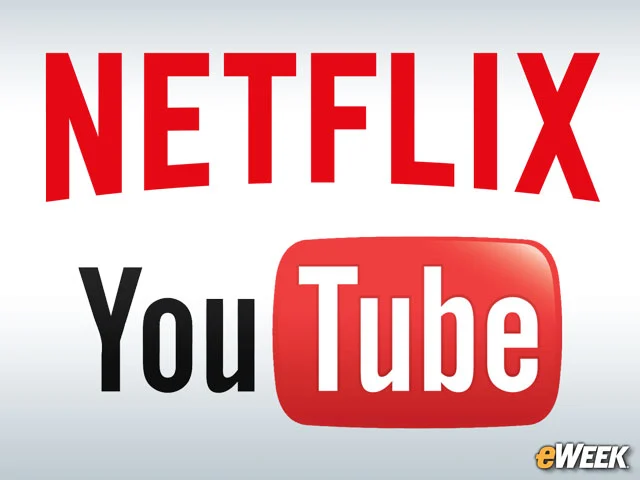016-06-23
-

10 Fascinating Facts From 2016 Sandvine Internet Phenomena Report
New research examines how people living in North America and Latin America use the Internet. Did you know that a rising percentage of Web traffic is encrypted?
-

Netflix Is Still Tops
On fixed networks, Netflix is still tops. Sandvine found that Netflix represented 35.2 percent of all downstream traffic on North American fixed networks, topping YouTube, which could only muster a 17 percent share. Regular old Internet browsing represents just 4 percent of all fixed network use.
-

Amazon Video Traffic Is Rising Rapidly
Amazon streaming video services are becoming increasingly popular, according to Sandvine. The company says that Amazon Video now represents 4.3 percent of all downstream traffic in North America and 4 percent of the aggregate of upstream and downstream traffic. Just a couple of years ago, Amazon was nowhere to be found in this list. Now, it's a rising competitor.
-

Media Streaming Reigns Supreme
Streaming video and audio are clearly the activity most Internet users love to engage in, according to Sandvine's data. The company found that the combination of streaming audio and video accounts for 71 percent of all evening traffic on North American fixed networks. By 2020, Sandvine estimates that number will grow to 80 percent of traffic.
-

Cloud Storage Is Bigger Than File Sharing
For the first time ever, cloud storage has become a more-desirable solution than file sharing. Cloud storage services, such as Apple iCloud, Dropbox and Google Drive, are now the most likely way for users to share and store content, the report finds. BitTorrent, which was once the dominant file-sharing platform and accounted for 31 percent of all traffic in 2008, now commands less than 3 percent of Web traffic.
-

A Look at Communications Apps
As voice and video calling becomes increasingly popular in services like FaceTime, WhatsApp and countless other messaging apps, it's taking up more traffic. In fact, on mobile networks, communication now accounts for more than 9 percent of all traffic, up from 7.4 percent, compared to 2015. When analyzing just upstream traffic, communications apps have a 17 percent share.
-

More Web Traffic Than Ever Is Encrypted
Those hoping for better network security should hear what Sandvine has to say. The company found that in January 2016, 61.3 percent of all Internet traffic was unencrypted, and just 37.5 percent was encrypted. However, that's better than the previous year, when 29 percent of Internet traffic was encrypted. On the mobile side, things are best of all, where 64.5 percent of traffic is encrypted.
-

What Happened to Web Browsing?
Plain old Web browsing is now a distant third in terms of Web traffic. Just 9.3 percent of all Internet traffic on mobile devices is standard Web surfing, making it the third-most-popular activity for users over cellular networks. On fixed networks, standard Web browsing has just 4.1 percent traffic share, again placing it in third place. It seems today's Internet users are more interested in apps and services than surfing the Internet.
-

What's Going On During Peak Periods?
Sandvine's data looks at so-called "peak periods," or when traffic is at its height. The company found that during those periods on mobile devices, users are most likely to be watching "real-time entertainment" or accessing social networks. Interestingly, 8 percent of mobile users are actually "tunneling," or cruising around the Internet over private networks.
-

YouTube, Facebook Among Most Popular Mobile-Access Services
Sandvine's data shows that some applications are more popular than others on mobile devices. For instance, users are most likely to employ YouTube and Facebook over cellular networks, which together account for more than a third of all traffic. Instagram, Snapchat and Google Cloud are also popular traffic-generators. Netflix was the eighth most popular service on mobile devices.
-

Netflix, YouTube Are Most Popular Fixed-Access Services
Over fixed-access networks, things are a little different. Netflix was by far the most popular app or service used on fixed-access networks, accounting for a third of all traffic. YouTube came in second place. Some other favorites among fixed-access users were BitTorrent, iTunes, Hulu and Facebook.
Sandvine, a company that provides network policy control solutions around the world, has released its annual evaluation of how people living in North America and Latin America use the Internet. The study, entitled the "Global Internet Phenomena Report," discusses Internet use across both fixed and mobile networks and determines where users go once they are online. The 2016 report notes that Netflix users are consuming a massive amount of data and that cloud storage has become the biggest source of upstream traffic across the United States and Canada. The report also found that a rising percentage of Web traffic is encrypted. Additionally, the study delves into just how important streaming audio and video have become in the average American's life. However, that's just the tip of the iceberg. xplores key takeaways from the Sandvine report and extracts some of the more interesting findings to help us understand how people in North America are using the Internet. Read on to learn more.
- eWeek